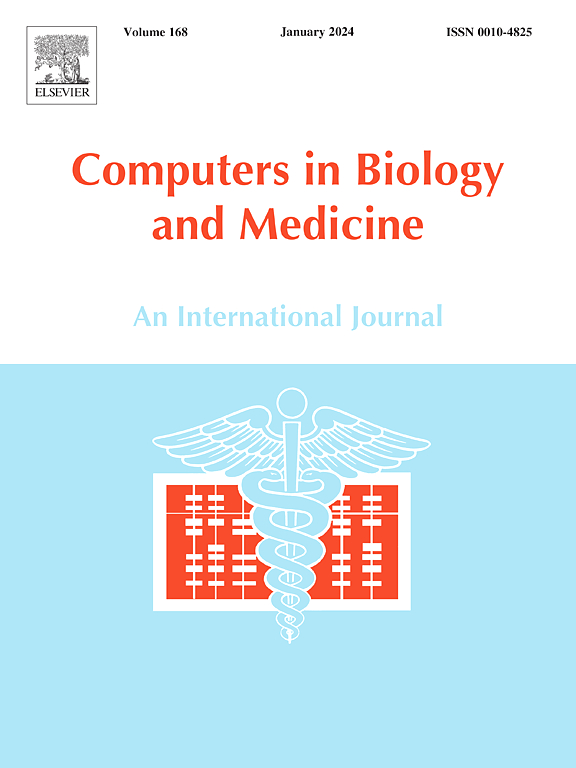一种基于聚类注意的多实例学习网络,用于增强组织病理图像的解释
IF 7
2区 医学
Q1 BIOLOGY
引用次数: 0
摘要
背景:组织病理学诊断包括检查异常的建筑模式和细胞水平的变化。全幻灯片图像(wsi)提供了组织样本的全面数字表示,可以进行详细的分析和解释。注释千兆像素的图像仍然是劳动密集型的,需要专家标记异常模式和细胞变化。为了解决这个问题,多实例学习(MIL)是一种很有前途的弱监督方法,它使模型能够从有限的注释中学习,同时保留关键的组织病理学特征。方法:然而,现有的基于mil的方法可能忽略了潜在的语义特征,限制了它们的有效性。为了克服这一限制,我们提出了一种新的基于集群感知注意力的MIL (CAAMIL)架构。该方法采用了一种先进的基于注意力的模块与聚类方法相结合,以提高异构特征的可解释性。我们的方法将建筑或细胞学特征聚类,使分组在聚类水平上可解释,并反映组织病理学分级或预后指标。结果:我们证明了我们的模型在幻灯片水平和贴片水平分类以及解释肿瘤和突变预测方面的有效性。实验结果表明,我们的模型在幻灯片水平和贴片水平上的肿瘤检测AUC得分分别为0.96和0.85,优于其他最先进的基于mil的方法。结论:我们提出的CAAMIL架构克服了现有MIL方法的局限性,可以有效地聚类特征并提供可解释的结果。该模型的高准确性和可解释性使其成为组织病理学诊断和肿瘤检测的有前途的工具。本文章由计算机程序翻译,如有差异,请以英文原文为准。
A cluster attention-based multiple instance learning network for enhancing histopathological image interpretation
Background:
Histopathological diagnosis involves examining abnormal architectural patterns and cellular-level changes. Whole slide images (WSIs) provide comprehensive digital representations of tissue samples, enabling detailed analysis and interpretation. Annotating the giga-pixel images remains labor-intensive, requiring experts to label abnormal patterns and cellular changes. To address this, Multiple Instance Learning (MIL), a promising weakly supervised approach, enables models to learn from limited annotations while preserving key histopathological features.
Method:
However, existing MIL-based methods may overlook potential semantic features, limiting their effectiveness. To overcome this limitation, we propose a novel Cluster-Aware Attention-based MIL (CAAMIL) architecture. This approach employs an advanced attention-based module integrated with a clustering method to enhance the interpretability of heterogeneous features. Our approach clusters architectural or cytologic features, making the groups interpretable at the cluster level and reflective of histopathological grades or prognostic indicators.
Results:
We demonstrated the efficacy of our model in both slide-level and patch-level classification as well as in interpreting tumor and mutation predictions. Experimental results show that our model achieves an AUC score of 0.96 for tumor detection at slide-level and 0.85 at patch-level, outperforming other state-of-the-art MIL-based methods.
Conclusion:
Our proposed CAAMIL architecture overcomes the limitations of existing MIL methods by effectively clustering features and providing interpretable results. The high accuracy and interpretability of our model make it a promising tool for histopathological diagnosis and tumor detection.
求助全文
通过发布文献求助,成功后即可免费获取论文全文。
去求助
来源期刊

Computers in biology and medicine
工程技术-工程:生物医学
CiteScore
11.70
自引率
10.40%
发文量
1086
审稿时长
74 days
期刊介绍:
Computers in Biology and Medicine is an international forum for sharing groundbreaking advancements in the use of computers in bioscience and medicine. This journal serves as a medium for communicating essential research, instruction, ideas, and information regarding the rapidly evolving field of computer applications in these domains. By encouraging the exchange of knowledge, we aim to facilitate progress and innovation in the utilization of computers in biology and medicine.
 求助内容:
求助内容: 应助结果提醒方式:
应助结果提醒方式:


